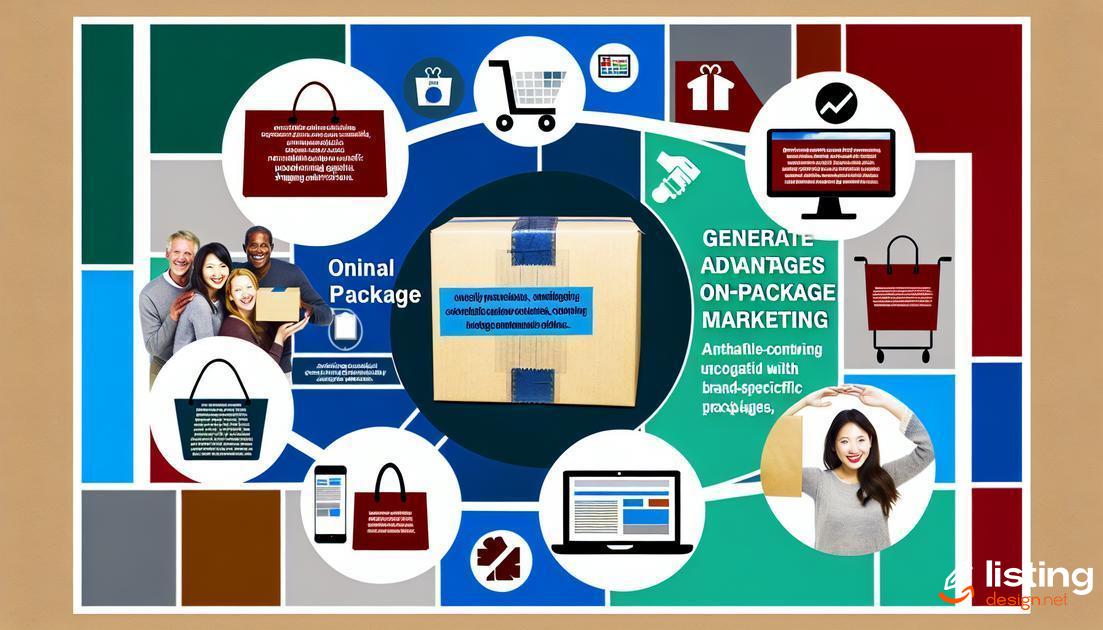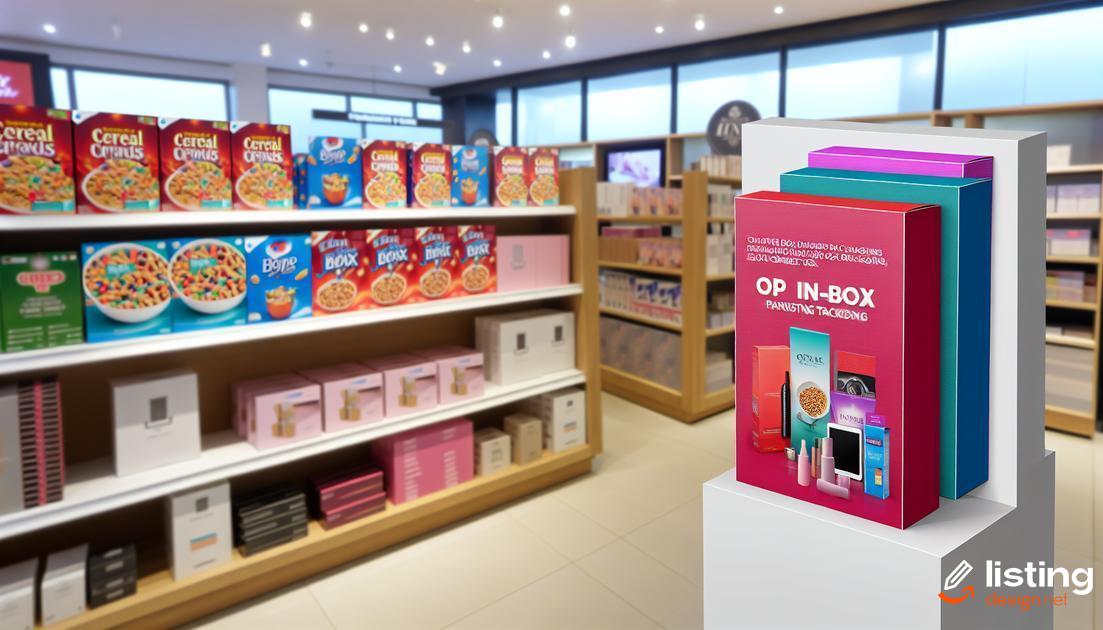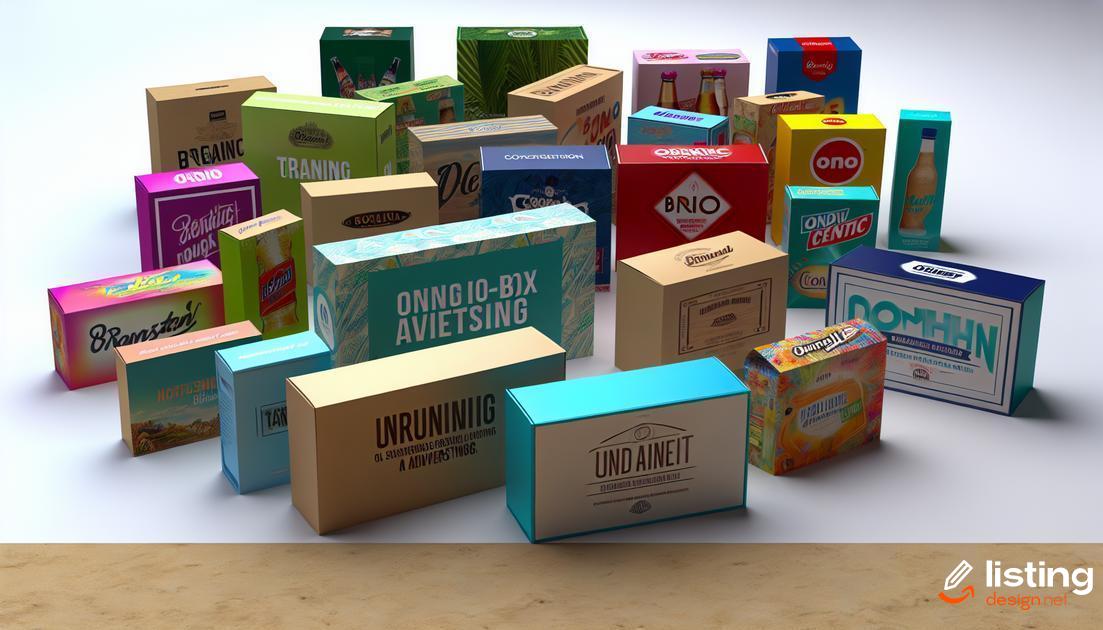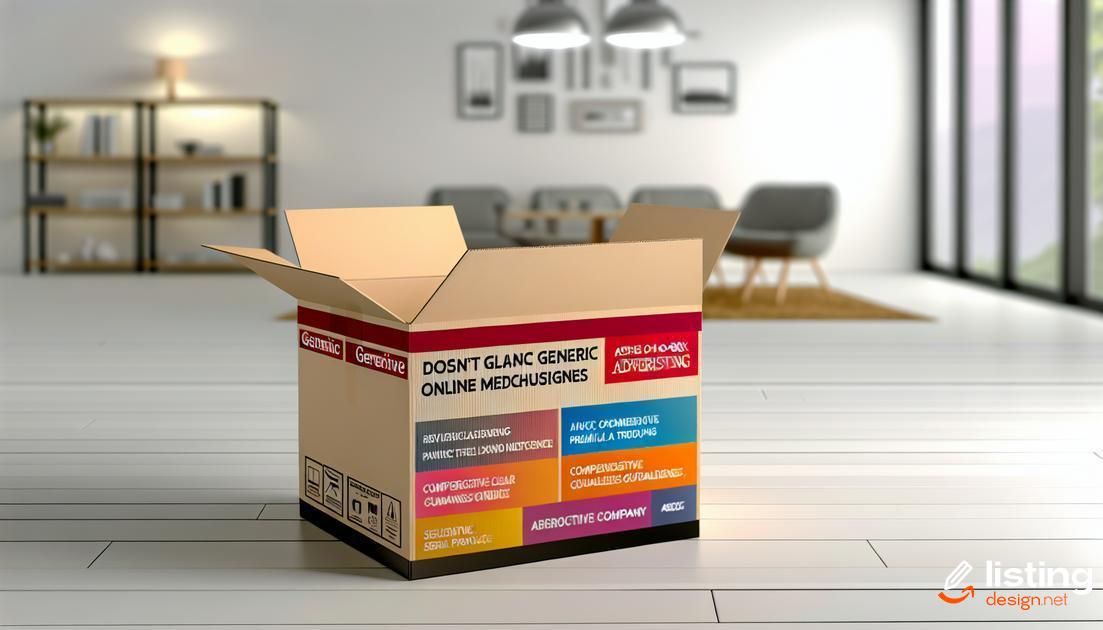Amazon On-Box Advertising is a powerful way to enhance brand visibility and drive sales. This innovative approach utilizes the packaging of products to communicate directly with customers. By incorporating attractive designs and compelling messages, businesses can leave a lasting impression right at the unboxing moment. In this article, we will explore what Amazon On-Box Advertising entails, its benefits, and effective strategies to make the most out of this advertising method. Let’s dive in!
Table of Contents
What is Amazon On-Box Advertising?
Amazon On-Box Advertising is an innovative marketing strategy where brands can place promotional materials directly on the packaging of Amazon’s shipped products. This method takes advantage of the vast reach of Amazon’s delivery network to engage with consumers in a unique and targeted way.
Amazon’s packaging becomes a canvas for advertisements, allowing brands to capture consumer attention immediately upon package delivery. These ads can include anything from printed inserts to custom-printed boxes that highlight special offers, product launches, or brand messages.
This approach not only leverages the physical space of the package but also adds a tangible, surprise element to the customer’s unboxing experience, which can enhance brand recall and customer satisfaction.
Benefits of Amazon On-Box Advertising
Amazon On-Box Advertising provides several advantages for businesses looking to enhance their marketing strategies. By using unique packaging, brands can capture customer interest right from the moment a package is received. One notable benefit is the capability to utilize packaging as an additional advertising surface, which can reduce marketing costs by maximizing existing resources.
Moreover, On-Box Advertising offers a personalized touch that fosters a deeper connection with customers. This type of advertising employs eye-catching visuals and direct messaging that can effectively communicate promotions, new product launches, and brand stories.
Another significant benefit is the potential to increase brand recall. When customers receive a package adorned with branded messages and designs, it creates a memorable experience that reinforces brand identity. This not only aids in customer retention but can also lead to word-of-mouth recommendations.
Finally, Amazon On-Box Advertising helps to create a cohesive marketing ecosystem. By integrating packaging with online campaigns, brands can create a seamless customer journey that bridges the digital and physical realms. This strategy enhances overall marketing efforts and delivers a more consistent brand message.
How to Get Started with Amazon On-Box Advertising
Key Strategies for Effective On-Box Advertising
Effective on-box advertising can significantly enhance brand visibility and influence purchasing decisions. Here are some key strategies to consider:
1. Highlight Key Product Features
Use the packaging space to emphasize standout features of your product. This helps in capturing the attention of potential buyers and encourages them to learn more about the product.
2. Utilize Eye-Catching Graphics
Visual elements such as vibrant colors, bold fonts, and unique graphics can make your packaging more appealing. Ensure that the design aligns with your brand identity and attracts your target audience.
3. Include QR Codes for Additional Content
QR codes can lead customers to video tutorials, customer reviews, or special promotions. This not only enhances the customer experience but also provides additional product information effortlessly.
4. Personalization
Personalized packaging can create a memorable experience for customers. Tailoring the box with individualized messages or designs can elevate customer satisfaction and loyalty.
5. Highlight Sustainability
Consumers are increasingly becoming environmentally conscious. Highlighting the sustainable aspects of your packaging can positively influence customer perception and purchasing decisions.
Applying these strategies can help create impactful on-box advertising that resonates with customers and boosts sales.
Measuring the Success of Your On-Box Campaigns
To accurately measure the success of your on-box campaigns, focus on key performance indicators (KPIs) that align with your marketing goals. Begin by tracking the conversion rates to see how many customers make a purchase after interacting with your packaging. This can provide direct insights into the campaign’s effectiveness.
Another essential metric is brand awareness. Utilize QR codes or unique URLs on the packaging to gauge how many customers are engaging with your brand online. By monitoring these interactions, you can assess the impact of your on-box advertisements on brand visibility.
Additionally, measure the customer retention rate. Successful campaigns often lead to repeat purchases. Analyzing the frequency of repeat sales will help determine the long-term value generated by your on-box advertising efforts.
Don’t overlook customer feedback. Collecting data through surveys or reviews can reveal how customers perceive your packaging and its influence on their purchasing decisions. Qualitative insights can complement quantitative data, offering a holistic view of your campaign’s impact.
Case Studies: Brands Excelling in On-Box Advertising
Case Studies: Brands Excelling in On-Box Advertising
Several brands have leveraged Amazon’s on-box advertising to create memorable campaigns. Dove utilized the exterior packaging of their shipments to promote body positivity with powerful messages and QR codes leading to online resources. These packages were not only eye-catching but also resonated with their core audience.
Kellogg’s tapped into the potential of on-box advertising by incorporating fun, interactive designs on their cereal boxes. They featured puzzles and games that engaged children and encouraged repeat purchases. This approach increased customer interaction and brand loyalty.
Levi’s went a step further by using on-box advertising to showcase new collections and exclusive offers only available to customers receiving shipments. The boxes included stylish graphics and personalized discount codes, which were effective in driving additional sales and customer satisfaction.
Coca-Cola used their packaging space for seasonal promotions. For instance, during the holiday season, their boxes featured festive designs and limited-time offers which resulted in a significant boost in holiday sales. This campaign demonstrated the influential power of timely and context-aware on-box advertising.
Each of these brands successfully utilized on-box advertising to enhance customer experience, drive engagement, and boost sales. These case studies serve as a testament to the versatility and impact of this advertising medium.
Common Mistakes to Avoid in On-Box Advertising
Common Mistakes to Avoid in On-Box Advertising
One of the most significant mistakes companies make is failing to align the box design with their overall brand identity. Consistency is key; your packaging should reflect your brand’s colors, logos, and messaging to reinforce brand recognition.
Another common error is overloading the box with too much information. Simplicity is more impactful. Use clear and concise messaging to ensure that your main selling points stand out to the customer.
Avoid using low-quality materials for your packaging. Cheap packaging can damage easily and leave a negative impression. Invest in durable, high-quality materials that will protect your products and enhance the unboxing experience.
It’s also crucial not to ignore customer feedback. Gather insights from your customers to understand what works and what doesn’t. Adjust your packaging strategies accordingly to meet their needs and preferences.
Lastly, do not overlook the importance of following Amazon’s advertising guidelines. Non-compliance can result in penalties or removal of your listings, which can significantly impact your sales.
Understanding Amazon’s Guidelines for On-Box Advertising
Amazon has set clear guidelines to ensure all on-box advertising adheres to its quality standards and promotes a positive customer experience. Brands must understand and align with these regulations to avoid penalties and ensure their campaigns are successful.
Placement and Size: Amazon provides specific dimensions and placement guidelines for on-box advertisements to maintain packaging integrity and functionality. These dimensions must be strictly followed to avoid violations.
Content Restrictions: Advertisements cannot include deceptive, misleading, or inappropriate content. All claims must be verified and accurate. Additionally, certain categories, such as adult content or hazardous materials, are strictly prohibited.
Branding Consistency: It is crucial to maintain consistent branding across all on-box advertisements. This includes using the correct logo, color schemes, and brand messaging to reinforce brand identity.
Quality and Resolution: All on-box advertisements should be high resolution to appear professional and clear. Low-quality images or text can negatively impact customer perception and are not tolerated.
Compliance with Local Laws: Advertisers must ensure their on-box advertisements comply with local laws and regulations of the areas where the products are distributed. This includes any language or labeling requirements that might apply.
By adhering to these guidelines, brands can not only avoid penalties but also leverage on-box advertising as a powerful tool to enhance customer engagement and drive sales.
Cost Considerations for On-Box Advertising
When planning an Amazon on-box advertising campaign, understanding cost implications is crucial for budgeting effectively and maximizing ROI. The cost factors vary depending on several elements including design, production, and the choice of packaging materials.
Design Costs
Allocating a budget for design is one of the primary considerations. This may involve hiring a professional designer or an agency to ensure the visual appeal of your ad. A high-quality design can significantly influence consumer engagement, making it a worthwhile investment.
Production Expenses
The printing of your ads on packages is another major cost. The production expenses will depend on the volume of packaging materials and the complexity of the print work. Bulk printing can reduce the unit cost, but it may require a higher upfront investment.
Material Selection
The type of packaging material used can also affect costs. Premium materials may add to expenses, but they can enhance the unboxing experience and perceived value of your product. Evaluate the balance between cost, durability, and customer appeal when selecting materials.
Logistics and Distribution
Consider the logistics involved in getting the printed packages to the distribution centers. This includes shipping costs, which might vary based on the destination and volume of packages.
Balancing Costs and ROI
It’s important to track the performance of your on-box advertising campaigns to ensure that the costs justify the results. Metrics such as increased sales, brand awareness, and customer engagement can help measure the effectiveness of your investment.
Combining On-Box Advertising with Digital Campaigns
Integrating on-box advertising with your digital campaigns provides a seamless experience for your customers and amplifies your brand’s reach. Combining these two forms of advertising can create a cohesive brand message that resonates across multiple touchpoints.
One effective method to do this is by adding QR codes or promotional URLs on your packaging. When customers scan these codes, they can be directed to landing pages, special offers, or social media accounts. This not only boosts engagement but also allows for a more tailored marketing approach.
Another strategy is to synchronize the messaging and visuals on your packaging and digital ads. Consistency in brand imagery and slogans creates a more memorable brand experience and reinforces your message to the consumer.
Additionally, leveraging user-generated content can amplify your efforts. Encourage customers to share their unboxing experience on social media by using branded hashtags. Reposting these on your own digital platforms can elevate your brand’s authenticity and reach.
To further enhance this integration, make use of data analytics to track and measure the performance of both your on-box and digital campaigns. By understanding which elements perform best, you can optimize your strategies in real-time.
Lastly, personalized messages tailored to individual customer preferences can be incredibly effective. Use the data from both your digital and on-box campaigns to understand customer behavior and craft messages that speak directly to them.
Customer Engagement Through On-Box Advertising
Maximize your customer engagement by leveraging on-box advertising. This technological advancement turns your packaging into a dynamic marketing tool, capturing attention right at the unboxing moment.
Interactive Elements: Consider including QR codes or other interactive elements on your boxes. These can lead customers to special offers, product tutorials, or social media channels, encouraging immediate interaction.
Personalized Messages: Personalization increases the perceived value of your products. Incorporate personalized messages or exclusive discounts for repeat customers, fostering a sense of connection and loyalty.
Brand Storytelling: Use packaging to tell your brand’s story. Highlight your brand values, mission, or interesting behind-the-scenes content relevant to your product.
Multiple Touchpoints: Utilize on-box space to direct customers to various touchpoints like your website, customer service, or community forums. This can make their post-purchase experience more enriching and informative.
Customer Feedback: Encourage customer feedback directly through your packaging. Add links or prompts that invite customers to share their experiences and reviews on your platform or social media.
Future Trends in Amazon On-Box Advertising
Amazon On-Box Advertising is evolving rapidly, with new trends that are set to redefine how brands interact with their customers. One of the most exciting developments is the integration of Augmented Reality (AR) in packaging. AR allows consumers to have an interactive experience with the product packaging, creating a memorable and engaging moment.
Another trend is the use of QR codes on the box. These codes can lead customers to exclusive content, special promotions, or personalized recommendations, enhancing the shopping experience and driving repeat purchases. Additionally, there is a growing focus on sustainability. Brands are opting for eco-friendly packaging materials, which not only appeal to environmentally conscious consumers but also adhere to increasing regulatory requirements.
The incorporation of customized messaging is also gaining traction. By using data analytics, brands can tailor messages based on consumer behavior, geographic location, and purchasing history, making the advertising much more relevant and effective.
Lastly, the rise of smart packaging is another trend to watch. This technology enables the packaging to interact with smartphones and other devices, providing additional product information, usage tips, or even reordering options.
These trends highlight the dynamic nature of Amazon On-Box Advertising and its potential to create deeper connections with consumers.








